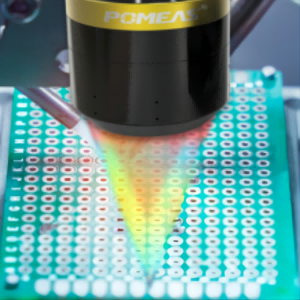
Spectrum sensors, a device that may sound complicated, actually works in a relatively intuitive and easy to understand way. In just one minute, let's demystify it and take you through a quick lesson on how spectral sensors work.
In short it can be divided into five steps:
light source emits:Spectral sensors begin by using a specific light source (e.g., xenon lamp, tungsten lamp, etc.) to emit a continuous spectrum of light that covers a certain wavelength range.
Sample Interaction:When this light strikes the sample to be measured, it interacts with substances in the sample. This interaction may include absorption, reflection, transmission and scattering. Different substances will interact with light in different ways depending on their composition and structure.
Spectral dispersion:After interaction with the sample, light rays change and these changed rays are directed to optical dispersing elements (such as prisms or gratings) in the spectrometer. The function of these elements is to disperse light of different wavelengths into beams of light in different directions to form a spectrum.
Signal Testing:The dispersed spectral light beams are received by photodetectors. The detector converts these optical signals into electrical signals for subsequent signal processing and data analysis.
Signal Processing and Analysis:The electrical signals undergo a series of processing steps, including amplification, filtering, analog-to-digital conversion, etc., in order to form digital signals representing spectral characteristics. These spectral data can then be de-noised, corrected, quantitatively analyzed, etc., by means of specific data processing algorithms to derive information on the composition, concentration or thickness of the substance to be measured.


The core of the working principle of spectral sensors lies in the detection of the properties and states of substances by measuring and analyzing the interaction between substances and light.
This technology is widely used in a variety of fields, such as environmental monitoring, food safety, and pharmaceutical research and development, providing important support for scientific research and industrial production.
Product recommendation
TECHNICAL SOLUTION
MORE+You may also be interested in the following information
FREE CONSULTING SERVICE
Let’s help you to find the right solution for your project!

- APPICATION CASE
- RESOURCE CENTER
- DOWNLOAD CENTER
SOLUTIONS SUPPORT
- ZOOM LENS SELECTION TOOL
- TELECENTRIC LENS SELECTION TOOL
- FA LENS SELECTION TOOL
- ZOOM RATIO TABLE
- CERTIFIED MODEL
SELECTION TOOL
- WHY POMEAS
- FAQ
- PRIVACY POLICY
- TERMS OF USE
- DELIVERY & RETURN POLICY
CUSTOMER CARE
 ADDRESS
ADDRESS
Add.:No.68, Chongwei Road, Baizhoubian, East district, Dongguan, China, 523000
CONTACT
 Tel:+ 86-0769-2266 0867
Tel:+ 86-0769-2266 0867
 Fax:+ 86-0769-2266 0867
Fax:+ 86-0769-2266 0867
 E-mail:marketing@pomeas.com
E-mail:marketing@pomeas.com

Wechat QR code

 ASK POMEAS
ASK POMEAS  PRICE INQUIRY
PRICE INQUIRY  REQUEST DEMO/TEST
REQUEST DEMO/TEST  FREE TRIAL UNIT
FREE TRIAL UNIT  ACCURATE SELECTION
ACCURATE SELECTION 